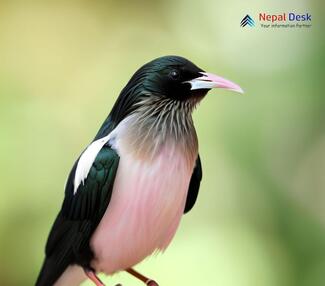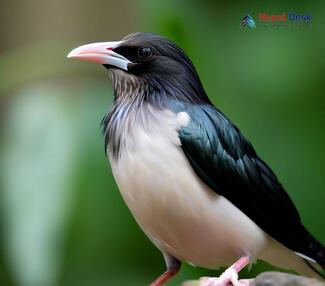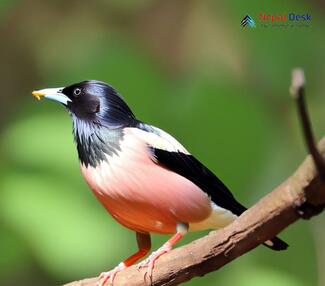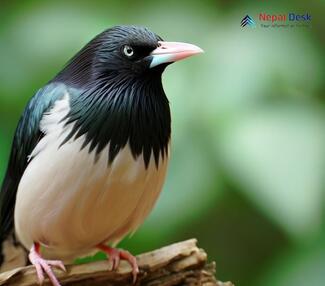The Rosy Starling (Pastor roseus) is a mesmerizing bird species, known for its vibrant colors, intriguing taxonomy, and captivating behavior. In this article, we will delve into the physical features, habitat, diet, and presence in Nepal of this fascinating species. We'll also explore an interesting point that sets the Rosy Starling apart from other birds.
Taxonomy and Physical Features
Belonging to the family Sturnidae, the Rosy Starling stands out due to its striking appearance. Adult males boast an iridescent black head, chest, and tail contrasted with bright rosy-pink plumage on their bodies. Females and juveniles exhibit a more subdued version of this color pattern. The species' exceptional looks have endeared it to bird enthusiasts across the world.
Habitat and Distribution
Rosy Starlings are migratory birds and can be found in various habitats during different times of the year. The breeding season sees them occupying open grasslands or agricultural fields with tall trees nearby for nesting. They typically prefer regions with abundant insect populations to support their dietary needs. Winter months find them in the Indian subcontinent, where they form large flocks and roost together, covering trees like a living blanket of feathers.
Diet
The diet of the Rosy Starling primarily consists of insects such as grasshoppers and locusts, making them a beneficial presence for farmers requiring natural pest control. They also consume fruits, berries, and seeds as a supplement to their insectivorous diet – particularly during migration and winter seasons when insect populations aren’t as abundant.
Presence in Nepal
Nepal holds significant importance for Rosy Starlings as it acts as a vital stopover point during their migration between breeding and wintering grounds. They can be spotted in the area during both spring and autumn migration as they pass through the country in large flocks. Although they don’t breed in Nepal, their presence adds a touch of vibrant color and captivating beauty to the nation's avian life.
Interesting Point: Rosy Starlings and Locust Swarms
One notable aspect of the Rosy Starling is its relationship with locust swarms. These birds are known to travel great distances in search of these insects, as they form a significant portion of their diet. Word has it that entire flocks of Rosy Starlings can follow locust swarms and consume thousands of insects per day, proving invaluable for natural pest control.
In conclusion, the Rosy Starling is a truly fascinating bird species with its captivating appearance, adaptable behavior, and remarkable relationship with locusts. By better understanding these striking creatures, we can appreciate their unique place in our planet's ecosystem and the important role they play in maintaining nature's delicate balance.




